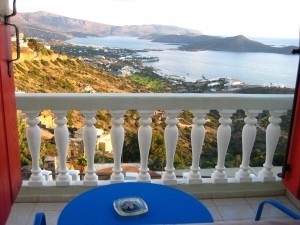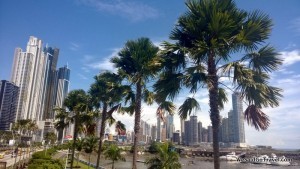Lisa Niver's Blog: We Said Go Travel, page 428
January 24, 2014
Capri: Presently on the Beach
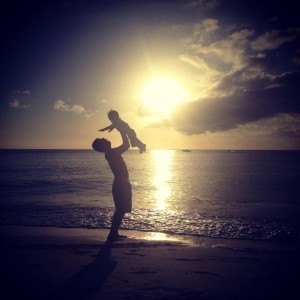 I was born in the city in Vietnam and have lived in the fast-paced city life all of my life here in the United States. Although I love the diversity of cultures, exchanges in ideas, and the excitement of city life, time simply flies by so quickly that I often find myself wondering if I could have used my time more wisely and meaningfully with those around me.
I was born in the city in Vietnam and have lived in the fast-paced city life all of my life here in the United States. Although I love the diversity of cultures, exchanges in ideas, and the excitement of city life, time simply flies by so quickly that I often find myself wondering if I could have used my time more wisely and meaningfully with those around me.
Whenever I feel the need to put a pause to my hectic schedule, I often retrieve to the one place where time slows down for me, and I am able to better reflect and attend to my priorities, my family.
The beach is such an integral place in my life. So many wonderful memories come to mind when I think of the beautiful beaches and waters that I have been blessed to visit and enjoy. My husband proposed to me on the sandy beach of Galveston, which I was so happy I almost dropped the ring in the ocean. Our honeymoon was on the beautiful city of Cancun, where I snorkeled in the middle of the beautiful Gulf of Mexico for the first time.
On the beach in little island of Capri was where I swam in the brisk, cool Mediterranean Sea for the very first time. Our babymoon was in Bora Bora, where I felt our baby’s first faint kick. On the soft and white sandy beach in Destin, Florida was where we took our baby for our very first family vacation together at about 4 months old for a family reunion. Splish-splashing on the shore of Jamaica was where my sweet baby went to for his first international trip. And recently, along Seven Mile Beach in Grand Cayman was where we created our very own sandman to replace the traditional snowman to celebrate Christmas in the Caribbean. My memories on the beach and of the beach are plentiful and truly invaluable.
Since our trips to the beach are mostly part of a vacation, our time there has always been greatly limited and precious. May it be building sandcastles, leaving footprints in the sand while chasing our nineteen month old, feeling the gentle brush of the waves along the shore, “stargazing” of starfish as they come near the shore or watching the last sunrise before heading home, time spent on the beach reminds me to slow down, live, and cherish the great gift of the present. As the beach constantly reminds me that no grain of sand on the beach is ever the same as no other time in our lives is the exactly the same as now, I must seize the moment before me. Thus, the gentle reminder of the beach and ocean has inspired me to live more fully, meaningfully, and presently each and every day. So much so that samples of sand from the beaches that we have visited as a family sit in jars by my bed to remind me to slow down and cherish the present everyday, even when I am back at home and back to my life in the city.
About the Author: My name is Ha Dinh. I am a first grade educator, mother, wife, and avid traveler. My husband and I love traveling, and when we knew we were expecting our baby, we decided to “give” our little one the world by taking him along with us as we continue to visit, discover, and learn about the wonderful people and places around the world. Find me on Facebook.
Thank you for reading and commenting. Please enter our next Travel Writing competition and tell your story.
The post Capri: Presently on the Beach appeared first on We Said Go Travel.
Rice Terraces of the Philippine Cordilleras: Part 2
Rice Terraces of the Philippine Cordilleras: Understanding the Complexity One Step at a Time (Part 2)
It has to be bore in mind that, as a continuing cultural landscape, the rice terraces should be seen and understood in relation to its environment (mountain landscape) and the traditions of its people (rituals, farming practices, beliefs, etc.). Key to better appreciation can be achieved by going beyond the tourists’ viewing points, and taking the effort to walk on terraces’ walls – only then will you realize the size of these structures – and interact with the locals of the immediate communities. Interestingly, the Hudhud Chants of the Ifugao, which is traditionally sung during planting and harvesting seasons, are also recognized as a Masterpiece of Oral and Intangible Heritage of Humanity – another testament on how rich the culture truly is.

The traditional Ifugao hamlet in the middle of the Bangaan Rice Terraces.
Until the inscription of the Bali’s Subak System in 2012, the Rice Terraces of the Philippine Cordilleras are the only properties in the World Heritage List that are dedicated to the production of the single most important crop in the world, rice.
What is then the assessment?
The rice terraces, however, also became victims of the disruptive nature and effects of modernization. The Ifugao Rice Terraces (this includes the 5 WHS) have been listed twice as one of the 100 Most Endangered Sites in the World by the World Monuments Watch in 2000 and 2010, respectively. These were in response to the two waves of massive abandonment of the rice terraces by local farmers. In the aim to find greener pastures, farmers fled to the cities leaving the rice terraces unattended and crumbling. At the same time, the indigenous local rice strain called ‘tinawon’ that adapted to thrive in such high altitudes was also substituted with “more productive” and “easier to produce” cash crops, creating a serious shift in the integrity of this cultural landscape.
Given the alarming status of the world heritage Rice Terraces of the Philippine Cordilleras, the properties were also placed in the World Heritage In Danger List in 2001 until significant improvements and reparations were finally secured in 2012.
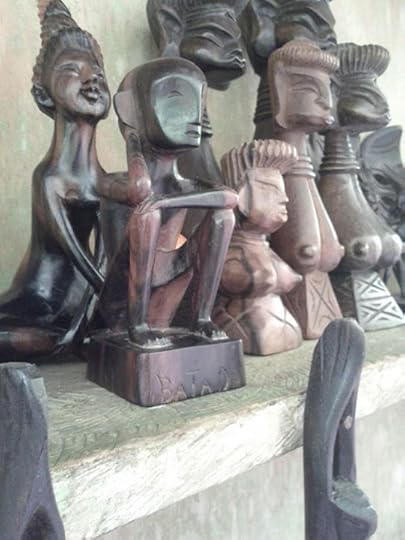
A Bul-ol, the Ifugao god of harvest, and other wooden crafts by the people of Batad.
The Rice Terraces of the Philippine Cordilleras represent the larger entirety of the Ifugao Rice Terraces – the five sites are the best embodiment of the rice terraces’ Outstanding Universal Values. The Rice Terraces of the Philippine Cordilleras will always have a special place in humanity as it was the first set of properties to be assigned as world heritage sites under the cultural landscape category upon inscription. Indeed, these are a magnificent feat of human ingenuity, creativity, and resourcefulness amidst harshly mountainous, uneven terrains.
For Filipinos, with the farming traditions and the people’s lifestyles largely unchanged, these ancient rice terraces are an enduring portrait of the ways of life of the Ifugao for over 2,000 years.
The post Rice Terraces of the Philippine Cordilleras: Part 2 appeared first on We Said Go Travel.
Colombia: Mud, Sweat and Tears
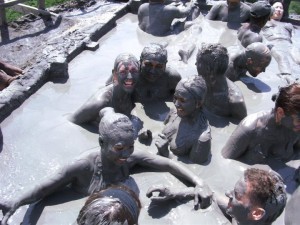 You can dress a puddle of mud up how you like. Call it a “mud spa”, “a mud volcano”, even a “mud fountain” if you want-but essentially, it remains what it is-a puddle of mud.
You can dress a puddle of mud up how you like. Call it a “mud spa”, “a mud volcano”, even a “mud fountain” if you want-but essentially, it remains what it is-a puddle of mud.
These are my thoughts as I stood on the wooden steps of the 15 metre El Totumo mud volcano in Colombia. Every year, thousands of willing tourists queue up on rickety stairs to slide into this “natural wonder. As I watch the group in front of me slipping around in brown viscose liquid, I ponder my life so far that had led me to this point. Why had I exclaimed gleefully (and slightly swayed by champagne) on my fortieth birthday that I was going to live life to the full and try things I had never tried before? Why had I not limited this to trying a new curry at the local restaurant in North London or putting ice in my cider? Even a tandem parachute jump has its merits. Instead, here I am, standing in my oldest bikini (the recommendation is to wear something you will never need to wear again) at the northernmost tip of Colombia, wondering what excuse I can give to get me out of this situation and back on the white sand beaches of Cartagena with a pina colada in hand.
But time shows no sympathy and I am soon at the edge of the mud crater, looking into a sludgy hell. I politely let all those behind me pass but, eventually, there is no alternative. Calling on my innermost resources, I step into the crater. My dignity immediately bubbles away through the quagmire as I slip on top of a complete stranger, trying to find my horizontal equilibrium. How can I describe it? Like swimming through custard? Like wrestling in gooey gloop? From above, we must look like a human broth, ready to be served to a famished volcano god.
I must admit, I am not instantly enchanted. I certainly regret paying the on –site photographer to take photographs of me looking like some zombie tourist, coated in grey slime. There comes a time however when you give yourself over to an experience and let the rules of your previous life disappear. Before long I am giggling and mud-diving with all the others, delighting in the novelty and absurdity of the experience. When I finally slither out (and I DO slither) I am not even faintly perturbed by the experience of paying three dollars to have local women wrestling off my bikini and scrubbing me down in a nearby lagoon . Old fashioned British reservations melt into the Colombian heat and I embrace the moment.
So would I recommend bathing in the El Totumo mud volcano in the second happiest nation in the world? Let’s just say, I am glad I took part and was not “a stick in the mud”.
About the Author: Fran Conley. I am a teacher and traveller, sometimes at the same time! I live in North London, U.K and have a husband, two wonderful children and numerous animals.
Thank you for reading and commenting. Please enter our next Travel Writing competition and tell your story.
The post Colombia: Mud, Sweat and Tears appeared first on We Said Go Travel.
January 23, 2014
Spain: Discovering La Rambla Barcelona
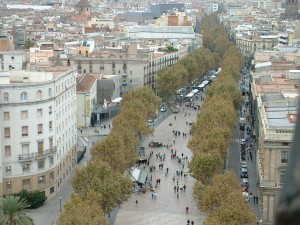 Groups of girls tittered and huddled together whispering. Middle-aged couples strolling arm in arm glanced then looked away. The agitation and flurry of interest seemed to be growing as someone in the ambulating crowd neared our table. Munching on paella and sipping sangria I glanced up to see what all the fuss was about. Down La Rambla came a tanned man in his 60s, slim, with coiffured hair. A brown leather bag was slung across his body and he was wearing sandals. And that was all. Nothing else. Unless you count the silver ring piercing a vital part of his anatomy. My children joined in the tittering and I suppressed a smile.
Groups of girls tittered and huddled together whispering. Middle-aged couples strolling arm in arm glanced then looked away. The agitation and flurry of interest seemed to be growing as someone in the ambulating crowd neared our table. Munching on paella and sipping sangria I glanced up to see what all the fuss was about. Down La Rambla came a tanned man in his 60s, slim, with coiffured hair. A brown leather bag was slung across his body and he was wearing sandals. And that was all. Nothing else. Unless you count the silver ring piercing a vital part of his anatomy. My children joined in the tittering and I suppressed a smile.
It was the last evening of our stay in Barcelona, a city I’d visited some years before. My first visit to Spain I’d found travelling around difficult and the people unfriendly. I’d wondered if I wanted to return but this time had been very different and made me appreciate all Barcelona had to offer. I was glad we’d decided to come.
Our hotel was near La Rambla so we walked there every day. The Spanish poet Federico Garcia Lorca said La Rambla was the only street in the world he wished would never end. He had a point. From the Placa de Catalunya, in the centre of the city, to the statue of Christopher Columbus near the sea, La Rambla is a delightful place to stroll, shop, eat and, as we discovered, be entertained.
Popular with locals and tourists alike La Rambla daily revealed something new. One day our path was full of cameramen, extras and hangers-on, we were obviously in a film set. A spectator told us they were shooting a Woody Allen film starring Scarlett Johansson. We watched for a while peering into nearby alleys and doorways hoping to see someone we recognised but with no luck. A year later ‘Vicky Cristina Barcelona’ was released.
Of course we ventured further afield, visiting many of the city’s tourist attractions. I loved the architectural whimsies created by Antoni Gaudi for which Barcelona is famous. My favourite, the basilica La Sagrada Familia, is still unfinished after 130 years. As we wandered around its interior stone masons and builders worked regardless of the tourists. The whirr of their electric saws and banging of their hammers was definitely not the music of angels. The dust from the stonework danced in the coloured light from the stained glass windows. Everyone and everything seemed busy. There was not the solemnity usually associated with grand ecclesiastical buildings, which added to its charm. The detailed decoration of the basilica was entrancing, inside and out, everywhere you looked there was something new to enjoy. I don’t know when the estimated finish date is but I’m going back in a few years to see progress.
One day we caught the train to the foot of Montserrat and then the cable car up into the mountains, to the Benedictine abbey, Santa Maria de Montserrat. The cooler air added to the tranquillity despite the hordes of people visiting with us. The abbey was substantial with a lovely courtyard in the centre. We shuffled along in the queue to see the statue of the Black Madonna, which the abbey is built around and which thousands come to see each year. The serenity which the Abbey enjoys today conceals a tumultuous past. Several monks were killed during the Spanish Civil War and during Franco’s dictatorship the Abbey became a refuge for many who were seen as enemies of his regime.
But most of our time was spent enjoying Barcelona itself, its food, crowds, architecture and vitality. The sea at one end of La Rambla was the perfect backdrop for the city and we spent time wandering by the harbour looking at the boats anchored there. Always it was back to La Rambla, it seemed to be the heart of Barcelona. Which is why we found ourselves eating our final meal at a restaurant there one balmy evening, watching the people of Barcelona go by.
About the Author: Clare Gleeson is a New Zealand historian, librarian and travel writer who enjoys exploring her own country as well as those further afield. Read more on her travel blog, The Wandering Historian.
Thank you for reading and commenting. Please enter our next Travel Writing competition and tell your story.
The post Spain: Discovering La Rambla Barcelona appeared first on We Said Go Travel.
Crete, Greece – My Spiritual Home
It’s the one place on earth where I don’t like to sleep: I don’t want to miss a thing.
I don’t want to waste a minute of the day, or night.
It’s my spiritual home. The place where I take off my suit of armour and just be me.
It’s where I breathe deeply.
Where I laugh like a child again.
It’s where suddenly I am speaking my newly-acquired second language, without reticence and hesitation, and I’m understood.
Where I live like a local, with only a passing notion of time and a glorious tendency to live spontaneously.
“Sit for a coffee.”
“Share a meal with me.”
“Let’s take a walk.”
“Come for a swim.”
It’s so liberating.
The place is small but has a gargantuan history and culture, and has contributed more to the rest of the world than any other place its size. It has endured centuries of invasions and so been injected with extraordinary influences such as Byzantine, Venetian and Turkish to name a few. It lies at the heart of the Mediterranean diet and is known as the cradle of western civilization thanks to the ingenuity of the Minoan race.
It is the island of Crete.
The largest of the Greek islands, Crete is a tourist mecca. But push past the noisy the English-style cafes and the lines of shops selling gaudy t-shirts and you’ll find the ‘other’ Crete.
My Crete…
Where the food is all locally grown, and is literally taken from the ground and the sea the very morning it’s lovingly cooked with olive oil from the trees outside the kitchen window and fresh oregano and thyme from the fields beyond.
Where an angular, blue-eyed shepherd deftly herds his flock over the ragged, unforgiving terrain, as the tune of the goat bells clang in harmony with their own echoes from the mountains above.
Where Yia Yias (grandmothers) enshrouded in black blithely sweep the crooked pathways around their village, while the men loudly discuss the day’s news from under tamarisk trees as they repair sunflower- coloured fishing nets.
Where the aroma of strong Greek coffee and Assos cigarettes coming from every cafeneion beckons like forbidden fruit …since when did cigarettes smell so good?
Where pale Cretan cats, lithe and sleek sleep Sphinx-like beneath Carob trees dripping with fruit.
Where I swim far, far into the blue as I play hide and seek with an octopus scurrying along the sand and pottery shards beneath me.
Where the Mediterranean sun hopscotches over crystal clear waters creating blues and greens unseen on an artist’s easel.
Where visually, life is like living in a postcard, and where, despite the political and financial woes of the country I am treated as one of the family – greeted with open arms and a warm hug and generously given everything they have. Food…oh so much food. A place to stay. The use of their only vehicle. The list is endless.
It’s where I rise daily just as a pomegranate sun first spreads her sleepy fingers over the hill, creeping forward and painting all gold as she passes.
My own very special place in Crete is a little balcony in a villa in Adrakos, a small Cretan family-run escape nestled high on a hill between the two fishing villages of Agios Nikolaos and Elounda on the East Coast.
Here I sit looking at a view which defies description, suffice to say I can see forever. Over pristine bays and whitewashed houses; perfect hotels with their perfect swimming pools; Byzantine churches; old windmills and a road which meanders along the water’s edge. In the distance I can see Spinalonga – or what I call ‘the island of infinite tears’ for it too has a huge, but very different history. It was the last leper colony in Europe.
Here I voraciously consume the days and nights…exploring…eating…swimming…walking…talking… learning…questioning…writing…photographing…observing…absorbing…thinking…dreaming…planning
…breathing…living.
Here I am inspired…passing time wisely…with no regrets. Just being me.
About the Author: Francesca Muir – I am passionate about photography, travel, colour and the Mediterranean lifestyle. In the late 1980s I lived in Agios Nikolaos, Crete for nearly 10 years where I had the only English-speaking, daily music and news radio program on the island and ran villas and a dance school, amongst many other things. My daughter was born there and in 1996 we returned to Sydney, Australia. Find me on Facebook.
Thank you for reading and commenting. Please enter our next Travel Writing competition and tell your story.
The post Crete, Greece – My Spiritual Home appeared first on We Said Go Travel.
Ambling on the Baja
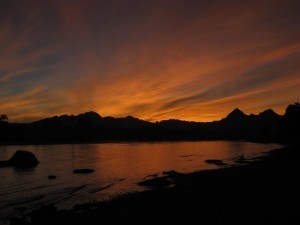 Ambling is an art. Instead of rushing to experience every new sensation, ambling is the art of slowing down. The slower you go the more time, the more experiences and the fewer regrets you have. Until settling in Loreto, Baja California Sur, I never understood the value of ambling and the many ways in which time is measured.
Ambling is an art. Instead of rushing to experience every new sensation, ambling is the art of slowing down. The slower you go the more time, the more experiences and the fewer regrets you have. Until settling in Loreto, Baja California Sur, I never understood the value of ambling and the many ways in which time is measured.
In an amble down the Malecon waves break against the sea wall. Frigate birds soar and wheel. Like arrows from the sky, pelicans plunge. In formation Blue-footed Boobies plunge. Cormorants bob and dive. Sea Gulls squabble with Terns over a fresh caught fish. Red Sally Lightfoot crabs crawl on rocks in the breaking waves. Bait fish break the water in schools driven by an unseen predator.
The ripping of the Pacific Plate from the North American plate and the birth of the Baja Peninsula are captured in the fractured summits of volcanic cones and layers of lava arrested in mid flow. To the North the volcanic cone of Isla Carmen with its lava flows frozen in the sea looks like a floating sombrero. To the south the jagged peaks and ridges of the Sierra La Giganta step down into the sea. The tops of sunken ranges, like frolicking offspring of La Giganta, form the islands of Danzante, Monserat, and Santa Catalina. Together with Coronado and Carmen they lie protected inside the boundaries of the Loreto Bay National Marine Park.
The Sea of Cortez fills the rift created by the tectonic shift. Its azure waters belie the depth of its waters. A profusion of life found only in the Sea of Cortez lies just below its surface – Cortez angelfish, Cortez damselfish, Cortez rainbow wrasse, Cortez soapfish, Cortez chub, Cortez grunt, and Cortez round stingray. Some days dolphins break the surface just offshore. In winter and early spring patience may be rewarded with the sight of a blue, finback or humpback whale.
In the solar day the sun rises gold or vermillion on a glassy sea. Breezes and currents create patterns that turn silver in the strengthening light. As the sun approaches the top of its arc, the blue of the water appears to give its color to the sky. As the sun descends, twenty two mile long Isla Carmen creeps closer to the peninsula only to pop back into place with the setting sun. The edge of night forms a line in from the eastern sky foretelling in muted shades the colors which will, in time, become vivid in the western sky where the light of the setting sun, now gone behind the mountains, is reflected from the clouds above.
The lunar tug on the sea is evident along the beach where water meets sand. In the daily ebb and flow, the tide itself is a reflection of the twenty eight day waxing and waning cycle of the moon. With the incoming tide, those waves ahead, creep further up the sand. Unable to retreat because of the rising sea, they are pushed forward inch by inch. In the ebbing tide the edge of each wave lingers on the wet sand reluctant to leave but eventually pulled back to join the deeper sea.
In nighttime ambles planets are the first lights in the darkening sky – Venus’ pulsating brilliance, Jupiter’s amber glow, Mars’ faint red tint, Saturn’s elongated orb. The ball of a rising full moon projects a triangular shaft of golden light across the darkened sea. As the moon continues to rise, it echoes the daytime sun, turning the sea’s surface muted silver. In the new moon, the sidereal dome appears to slide overhead as the earth rotates below. Orion, a gaseous space cloud visible in its belt, pursues Taurus. The Big Dipper and Cassiopeia’s broken W rotate in the Northern sky. The spiral of our own Milky Way Galaxy stretches like a white stream across the sky.
Like any art, rambling requires devotion and practice. In Loreto I am just beginning to learn the art of time well spent ambling.
About the Author: Ed is just another retired Gringo loving the Baja.
Thank you for reading and commenting. Please enter our next Travel Writing competition and tell your story.
The post Ambling on the Baja appeared first on We Said Go Travel.
Panama: Retirement Haven? Part 1 of 5
Over the last 10 years, countless periodicals, blogs and websites have claimed that Panama is an ideal retirement destination for a variety of reasons. The cost of living is low. Quality health care and government sponsored retiree benefits can save expats money and provide solid investment opportunities to either start up an entrepreneurial business or purchase real estate.
There is no doubt that Panama has serious pluses for potential retires who desire to relocate abroad to a country with a cheaper standard of living than the United States and Europe. The country of Panama is blessed with beautiful islands, ample coastline beaches, mountain retreats, and colonial towns. The people are friendly and outside of Panama City, the atmosphere is generally quite laid back and easy going. With a population of only three million, the country does not feel overly crowded.
We Said Go Travel (WSGT) delved into the county of Panama and investigated various locales that have been written about and praised in the media to determine if we agree that abundant fantastic retirement options exist in Panama for those considering the possibility of living abroad. In part one of this five section series, we will inspect the first stop that travelers will likely make when arriving to Panama, the metropolis of the country, Panama City.
With an eclectic mixture of modern high-rise buildings and Casco Antiguo’s refurbished old town, Panama City has aspects that are appealing. Accruing substantial daily revenue from the fascinating Panama Canal, the government has pumped major dollars into the city infrastructure, constructing a respectable skyline and a rejuvenated old town. The best healthcare in the country can be had here and there is no shortage of nightclubs for those who desire an active nightlife. A variety of budget to quality international restaurants are available.
Despite these positives, Panama City has some serious drawbacks. First of all, crime can be a serious issue in many of the barrios that are meshed within the city. The so-called red zones are notorious for robbing tourists; even in the daytime, one should exercise precaution. Another drawback is the heinous traffic that is especially noticeable from 5:00 – 8:00 p.m..
During these hours, the streets of vast portions of Panama City become filled with idle vehicles pumping pollutants into the air. Even though the city is near the water and pretty views can be had from locations such as the Causeway de Amadores, there are no beachesper se located within the city that would be recommended for swimming. Outlying beaches such as Punta Chame are within striking distance but at least an hour outside of the city depending upon traffic conditions.
All in all, WSGT deems Panama City a nice place to spend a few days enjoying the city skyline, the old colonial Casco Antiguo and, of course, the amazing Panama Canal. However, after a few days, we were ready to move on to more secure and less congested locales laden across the country. As for Panama City, we enjoyed what the city has to offer, but would not recommended it as a potential retirement destination in itself.
Look for Part 2-5 for more on Panama from George Rajna.
The post Panama: Retirement Haven? Part 1 of 5 appeared first on We Said Go Travel.
UK: The Calm before the Storm Hike
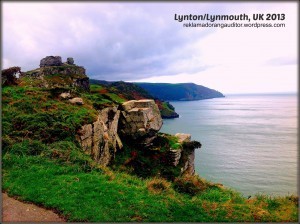 “Sometimes you want to go for a walk and you don’t want to be watched. You just want to be anonymous and blend in…” –Madonna Ciccone
“Sometimes you want to go for a walk and you don’t want to be watched. You just want to be anonymous and blend in…” –Madonna Ciccone
So I took a time off after some busy days (or weeks shall I say), just spending one Saturday away from home—away from the small town of Reading, UK. Because I was in dire need of a good hike, even if the weather forecast said it is going to rain, I still went on. And because no one else wanted to go for a hike, I went alone, as usual.
But on a lighter note, I think going out alone was a good idea; at least I had more time to enjoy my own company and have a dialogue with myself; something that I have to do and no one would mind. At that point in time, I think I needed to do some kind of reflecting.
I had this feeling that I was missing something; it’s an unexplainable feeling of hollowness. I don’t think anyone can understand, because I myself could not understand what I’m going through. And I had this need to seek refuge, and that I could only get from Mother Nature.
It’s that feeling that I get when I can’t distinguish which tricks which—the heart or the mind. It was confusing. But either way, I am more than sure that it’s not the best feeling in the world! So I just want to go somewhere to see something true–just like the cliff and the valley and the sea, and whatever the weather is. I could care less about the weather.
I believe that Mother Nature presents nothing but the truth. If I arrived in a place that’s awesome, then I should be glad and be thankful! If not, then I could always find another place. After all, the world is so massive, just waiting to be explored!
If it rains, then it rains; if it doesn’t, then I am lucky. And I guess that was what I needed at that time of confusion and obscurity–something true and (hopefully) wonderful. I was still carrying that hope that I would be stumbling upon a place that could embrace my lost and (somewhat) broken self.
And I found this silent sanctuary after traveling far; a place which seemed perfect for my chaotic mind. I sat relaxingly on one of the benches, breathing as if my lungs have been empty for so long; feeling the cold and strong winds against my body, and as if drawing out all the negatives and throwing them all into the innocent and calm waters of the sea. It was soothing.
Thankfully, as always, Mother Nature did not fail me. And I am grateful for it has always embraced me and poured me with so much good vibes. And yeah, I came here for a hike on a weekend before the UK was hit by a storm! 
And my last thought: I should do this more often.
About the Author: I am Simercita “Psymer” Cabasag, 29 years old. I was born and raised in the Philippines, but currently residing at Reading, United Kingdom. I am an auditor by profession but traveller by heart. Read more on my blog.
Thank you for reading and commenting. Please enter our next Travel Writing competition and tell your story.
The post UK: The Calm before the Storm Hike appeared first on We Said Go Travel.
January 22, 2014
South Africa: Home of the Lost Souls
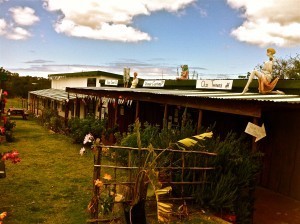 “Very strong ley lines here,” he says to me, dark beret pulled low over his head, “There’s a ley line going right though this bar.”
“Very strong ley lines here,” he says to me, dark beret pulled low over his head, “There’s a ley line going right though this bar.”
I shuffle in my barstool. I haven’t even been in this town for an hour yet. Ley lines?
“So hold onto your things because some crazy stuff goes down here.”
What kind of stuff? I wonder.
“I mean it’s a town with one Stop Street and five bars. There’s gotta be something suspect.”
His smiling wrinkles deepen the creases around his mouth, “So, welcome to Bathurst. You look like you belong here.”
The poet walks away. I’m in pineapple country. I drove 60km/h behind a cow on a road of geckos and chameleons to get here. Fast was not an option in travel and the destination seems to have stilled time itself. I find myself sitting next to some resident drunken Socrates, who, in all his tweaked extravagance, welcomes me with a very straightforward,
“I’ll take it for granted you are my friend.”
The old man has a bald patch with long white hair flowing around it, a laugh as robust as his thick thighs spread apart on a bar stool that barely carries his weight. He cuts right to the chase,
“So what you wanna do one day? Find a husband? Settle down? Buy a VW? Be woken up when it breaks down?”
He smiles, “Do you want money?”
He waits for my answer. I don’t reply. I know this is a trick. He continues,
“I have nothing, you can have half.”
He roars with intoxicated laughter. I wait to hear the note of insincerity – that bitterness that accompanies having nothing. It doesn’t come. The man seems genuinely happy.
Where am I? Very, very far from the rat race. The wise-cracking old man is an artist who refuses to reveal his work. A steel string reverbs from a tortured hippie in the corner, no stage. The poet returns.
“So you a writer?” he asks me.
“Yes, I guess.”
“Well that depends on how dedicated you are to your craft.”
No answer from me.
“What’s the colour of your silence?”
In the deep end, he shoves me. Like I should know this immediately. I can’t answer the poet’s question. But the balding, bulging artist jumps in. He knows the colour of his silence,
“Predominantly white with touches of gun metal.” – without even thinking about it. Then he returns to his beer and ignores us.
“Bathurst seems to attract lost souls,” says the poet, eyeing me like he knows.
Does he know? Could he possibly know? Just how aimless, forlorn, raw and depleted I am? Shall I unveil my buffet of vulnerability?
“So you’ve just finished a novel. You have something in your hand. And now you’re left with this pregnant space. It’s terrifying and beautiful,” he pauses, “Write another.”
“Can’t. No money.”
“How much of yourself did you put into that novel?”
“Everything.”
“So what do you have left?”
“Nothing.”
“So then, you have nothing left to lose.”
“Yes.”
“So write the first line of your next one.”
“Can’t.”
“You can try and guess who others think you should be. You might be wrong. And wouldn’t that be a tragedy? Be brutally yourself.”
One broke writer consoling another in the Bathurst Arms Pub, in a tiny 1820’s town with a turbulent military history. Twelve kilometers inland in the economically destitute Eastern Cape Province of South Africa: Nowhere. His words should have no bearing. They should hold no gravitas. He’s just a big city outcast, like me. In a place filled with big city outcasts, like me. Home, so nice to finally have met you. So sad that I cannot stay.
Maybe I just need Bathurst. Never to leave Bathurst. Where it’s all okay. Where the ley lines cross and the bohemians gather to eke out an existence and live for their craft in the middle of nowhere, drinking rainwater, surrounded by antiques, and reading used books.
“There seems to be a hole in your glass. Let me fix that for you.” Says the next barman, in the next bar, of the five bars in Bathurst.
There’s a trophy (boar’s head) on the wall. From each of its tusks, there hangs a bra.
“They call this the center of the universe because of the ley line running through Bathurst. That’s why everyone’s so nuts. And there’s a dungeon under this dining room floor…”
About the Author: Mia Arderne is a 24-year old writer of fiction and non-fiction from Cape Town, South Africa. She has just completed her Masters in English Creative Writing with a minor in Travel Writing at the University of Cape Town. She has had three short stories published in the last two years and is currently enrolled in the MatadorU on-line Travel Writing course.
Thank you for reading and commenting. Please enter our next Travel Writing competition and tell your story.
The post South Africa: Home of the Lost Souls appeared first on We Said Go Travel.
Florida: Kava Culture
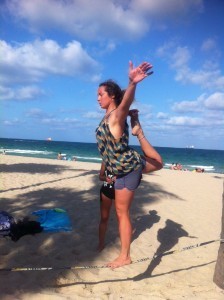 I was pedaling as quickly as I could, but I felt the ice dripping down my backpack onto my skin. The traffic on Beach Boulevard was backed up, but I zipped by in the bike lane and turned into Sunrise Village, a last remainder of old Ft. Lauderdale. It consisted of a scattering of tattoo shops, beach bars, an ice cream store, a cash-only pizza joint, and my current destination: the Fiji Kava Tea bar. I could already smell the familiar odor of Mr. B’s cigar.
I was pedaling as quickly as I could, but I felt the ice dripping down my backpack onto my skin. The traffic on Beach Boulevard was backed up, but I zipped by in the bike lane and turned into Sunrise Village, a last remainder of old Ft. Lauderdale. It consisted of a scattering of tattoo shops, beach bars, an ice cream store, a cash-only pizza joint, and my current destination: the Fiji Kava Tea bar. I could already smell the familiar odor of Mr. B’s cigar.
“Hey Amber, are you just getting back from a bike ride?” he asked from his usual spot on the porch furniture. Mr. B came here on spring break 30 years earlier and never left. His skin was just as tan and hair just as blonde. He had an edge to him from a few prison stints, but these days he was a tropical gardener who never looked back.
“Do you want to do a kava shell?” I asked.
“Sure,” he said and we went inside the shop that played soothing reggae music while customers puffed on fruit-flavored hookahs. Skateboards hung on the wall next to the tiki masks; one I knew to be Brent’s, the “kavatender” whose frizzy blonde hair was wilder than ever.
“Brent can you put this in the cooler for me?”
“What is it?” he asked from behind the bar and raised a curious eyebrow to my bag of ice.
“Typhoid pills. I need to keep them cold.” As if I told him it was a sub sandwich, he took the bag without question and went back to pouring kava tea in coconut shells for myself and Mr. B.
“Are you doing a bula? I want one,” rang a thick Chilean accent. It belonged to Paula, an underwater photographer who was wearing her bright blue wig. No one knew why she wore it, but by the end of the night we would all have photos with it on. Brent poured a kava for Paula, and we raised our coconut shells.
“Bula!” It was a “cheers to life.” We chugged the kava down and waited for the relaxing properties of the non-alcoholic tea to kick in.
“Are you doing work on your laptop again?” Paula asked me. Even after moving from New York City to get away from the grind, I brought it with me. The little shop changed that, and through all my world travels, I’d found where I belonged.
“Not today.” I just put in my two-week notice and wasn’t the least bit worried.
Paula and Mr. B entered into a heated debate about local businesses that refused to respect the light reduction law for the sea turtles nesting in the area. Before long they had the local news on the phone.
I sparked up a conversation with an outspoken tourist who was talking about the inflation of the U.S. dollar.
“In New York, where I’m from, we have one of the oldest alternative currencies in the nation.”
“What’s it called?” he asked.
“Ithaca Hours. The premise is that you pay for things with hours of your life. It makes you think how much of your life something is really worth.”
“Hey, any of you guys want some fresh tuna?” a skinny, shirtless man interrupted from the doorway as he held up a fish on his finger.
“Hey, Rusty. Nice catch today. Let’s cook it out back on the grill,” said Coral – a dominatrix and medium who claimed that the kava helped tone down her sixth sense.
Soon, the place was filled with beach bums and “yachties” (people who worked on the millionaires’ yachts). In time, the wealthy moving to Ft. Lauderdale would turn it into another Boca Raton or Miami, but for now it was the sleepy, weird city that I had come to love. Just as the little tea shop was buzzing with energy and conversation, Eric, the long-haired drunken owner, came storming in.
“How many times do I have to tell you not to cook fish out back? I run three other businesses and I don’t have time for this! Last week you brought a street performer in here, and now this? Turn the music down. It’s not relaxing,” he shouted and threw a bag of tea at Brent before storming off. We laughed when Eric left – he was another character and just as much a part of the impromptu entertainment.
“Does anyone want to slack line?” someone suggested and our misfit crew walked down the street to the sand and tied up our “tightrope” between the palm trees. It was against beach rules, but when patrol officers watched Donnie walk across – with prosthetic legs – they didn’t bother us. The only real rule here was to be present, and when we followed that everything else fell into place.
About the Author: Amber Nolan is a creative traveler who can’t resist an adventure, as evident in her current project which involves hitchhiking on airplanes across the United States. When she isn’t thumbing a plane ride or exploring remote areas, you can find her in a hammock on the beach in Fort Lauderdale. Her work has appeared on USA Today Travel, Frommers.com, Sherman’s Travel Media, Jetsetter, and numerous other publications.
Thank you for reading and commenting. Please enter our next Travel Writing competition and tell your story.
The post Florida: Kava Culture appeared first on We Said Go Travel.
We Said Go Travel
We Said Go Travel is a global community of over sixteen hundred writers with articles from every continent.
Stories are shared with photos and video from a perspective of the transformative power of travel. We Said Go Travel has hosted live and online events as well as travel writing contests around the world. ...more
- Lisa Niver's profile
- 57 followers


